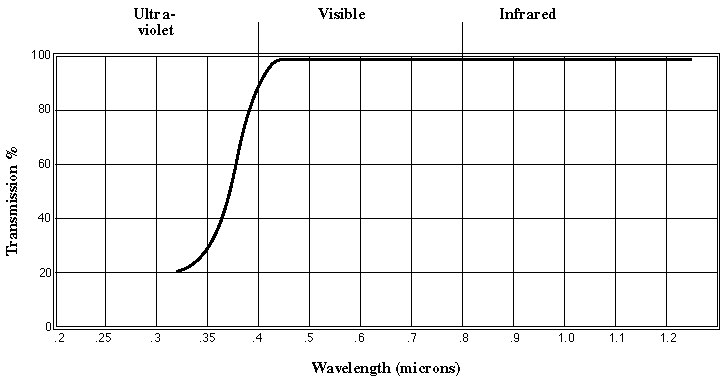    
|
|||
|
|||
Norland Optical Adhesive 68 ("NOA68")is a clear, colorless, liquid photopolymer that will cure when exposed to ultraviolet light. Since it is a one part system and 100% solids ,it offers many advantages in bonding of optical materials where the bonding surface can be exposed to light. The use of NOA 68 eliminates premixing, drying and heat curing operations common to other optical adhesive systems. Curing time is remarkably fast, and is dependent upon the thickness applied and the amount of ultraviolet light energy available.
NOA 68 is designed to give improved adhesion to many plastics such as acrylic, polycarbonate and cellulose acetate butyrate. In addition to plastics, NOA 68 has good adhesion to glass and metals and can be used to bond combinations of the three. Suggested uses for NOA 68 include bonding compound plastic lenses, laminating polarized film between glass or plastic, mounting plastic lenses in metal or plastic mounts and bonding cover glasses.
The recommended energy to fully cure the NOA 68 is 4.5 Joules/sq. cm of long wavelength UV light with maximum absorption between 350-380 nanometers. Most glasses and many clear plastics will transmit light in this range, although some clear plastics contain UV absorbers. The absorbers will reduce or eliminate the UV light to slow down or prevent curing. Systems must be designed with at least one substrate transparent to the UV light in order to cure the adhesive.
| HAND HELD | MANUFACTURER | CURE AREA | APPROX. CURE TIME |
| Opticure LED 200 |
|
1/2 inch | 5-10 seconds at 1/2 inch |
| DESK TOP | MANUFACTURER | CURE AREA | APPROX. CURE TIME |
|
4 x 15 inches | 40 minutes at 6 inches |
Some other light sources that can be used to cure the adhesive are sunlight, mercury lamps and fluorescent black lights.
When fully cured, NOA 68 has very good adhesion and solvent resistance, but has not reached its optimum adhesion to glass. This will come with aging over a period of about 1 week, in which a chemical bond will form between the glass and adhesive. This optimum adhesion can also be obtained by aging at 50° C for 12 hours.
After aging, glass bonds can withstand temperatures of -80 to 90° C while nonaged glass and plastic bonds will withstand temperatures from -15 to 60° C. In some cases, the adhesive will withstand temperatures to 125° C when used as a film or a coating depending upon the application.
The NOA bonds can be separated in chlorinated solvent such as methylene chloride. The bonded area must be soaked in the solvent and normally will separate overnight if only precured. Longer times may be necessary depending upon the extent of the cure and the size of the bond area. Caution is warranted because methylene chloride will attack many plastics.
| Solids | 100% |
| Viscosity at 25° C | 4,500 -5,500 cps |
| Refractive Index of Cured Polymer | 1.54 |
| Elongation at Failure | 80% |
| Modulus of Elasticity (psi) | 20,000 |
| Tensile Strength (psi) | 2,500 |
| Hardness - Shore D | 60 |
Shelf life of the liquid is a minimum of 4 months from the date of shipment, refer to the package label for the actual expiration date, if stored in a cool (5-22° C), dark place in the original container.. If refrigerated, allow the adhesive to come to room temperature prior to use.
Care should be taken in handling this material. The Material Safety Data Sheet should be read for this product as well as for any associated products such as alcohol, acetone or methylene chloride. Prolonged contact with skin should be avoided and affected areas should be thoroughly washed with copious amounts of soap and water. If the adhesive gets into the eyes, flush with water for 15 minutes and seek medical attention. Use the material in a well ventilated area, otherwise a NIOSH approved organic vapor mask is recommended.
